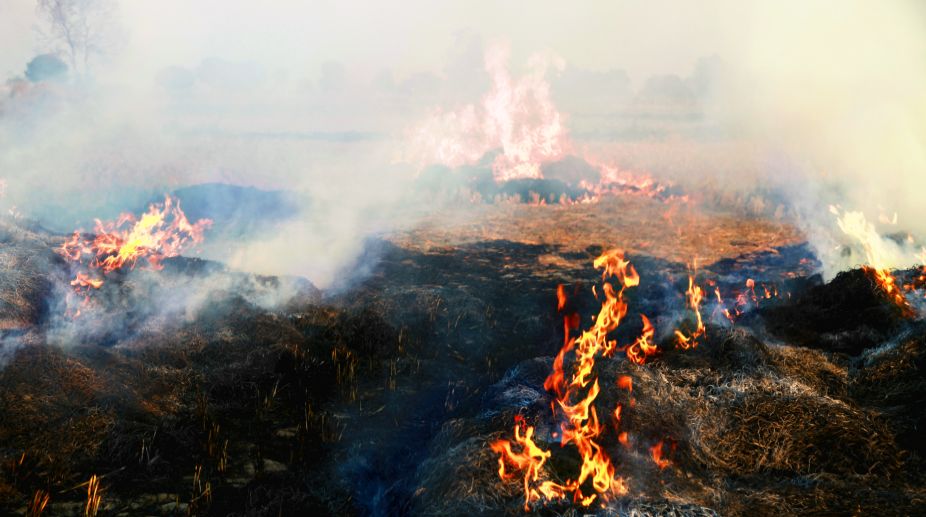Delhi, and the NCR, saw considerable deterioration in the air quality on Tuesday, with pollution levels of Faridabad (Haryana), Ghaziabad (Uttar Pradesh) and Bhiwadi (Rajasthan) placed under ‘severe’ category with index value worse than a day after Diwali.
With north-westerly winds coming from Punjab and Haryana where stubble burning according to the satellite images has increased manifold, air quality in Delhi-NCR may fall further.
Advertisement
According to the System of Air Quality and Weather Forecasting and Research (SAFAR), all 10 monitoring stations across Delhi recorded “very poor” air quality, with PM2.5 (particles with diameter less than 2.5 mm) ranging between 302 to 362. The safe range for PM2.5 is 60 as per national standards and 25 according to the international standards.
Discouraging outdoor activities and suggesting those with asthma to keep the medications handy, SAFAR on Tuesday recommended wearing respiratory masks of N-95 or P-100 standards while going out.
At Anand Vihar in east Delhi, the Delhi Pollution Control Committee recorded the PM2.5 value at all time high ranging betwen 753 to 773 between 3 a.m. to 4.30 a.m., while the lowest value was 167 for a brief period of 30 minutes from 2 p.m.
The Central Pollution Control Board showed dangerous trend in pollution level, with the Air Quality Index (AQI) recorded at very poor in Delhi at index value of 351 as compared to 328 on Monday.
The AQI in Bhiwadi was 404 (318 a day after Diwali), Faridabad 410 and 439 in Ghaziabad (412 a day after Diwali) — all placed under ‘severe’ category.
In Gurugram, the AQI was 343 as compared to 318 on Monday and in Noida, 348 as compared to 332 on Monday — both placed under ‘very poor’ category.
Meanwhile the satellite images from the National Aeronautics and Space Administrations’ FIRMS (Fire Information for Resource Management System) Web Fire Mapper show stubble-burning increasing manifold with both Punjab and Haryana marked in red (depicting fire).
The unabated stubble-burning in Punjab and Haryana, estimated to be around 35 million tonnes, was banned by the green court in November 2015. However, due to lack of support from the respective governments, farmers continued to burn paddy straw.
“Air pollution is set to increase. The north-westerly winds from Punjab and Haryana are slowing down in Delhi, and this will continue for some days,” Mahesh Palawat, Director of private weather forecast agency Skymet said.











